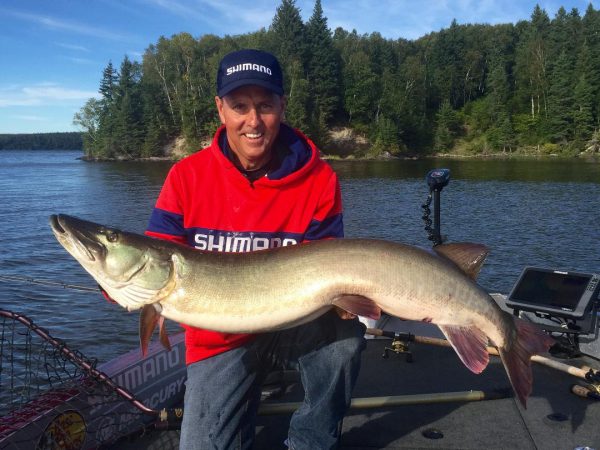Fall Musky Forensics! – Musky Hunter
Category: article
Oct 15th, 2019 by Keith Worrall
Modified Oct 15th, 2019 at 10:28 AM

Welcome to The Musky Hunter Television fall newsletter. In this edition, we’ll examine how to put together the clues to follow more muskies, and showcase some new products to help you boat more fish. If you love muskies, please like and follow us on Facebook, Twitter, Instagram to get in on all the action! Stay tuned for more information on the next big season of The Musky Hunter, beginning January 4, 2020. If you missed an episode of the TV show in 2019, you can download them HERE. Please share this newsletter with your friends and encourage them to subscribe. Click HERE to subscribe to our You Tube Channel.
FALL MUSKY FORENSICS
By Jim Saric
Every time I think I have fall muskies figured out, I am faced with a different set of conditions. It could be a warmer than normal fall, or a colder than normal fall. One fall season may have a sudden drop in water temperatures, whereas another fall may have the water temperatures stagnating for several weeks. It’s just the nature of fall musky fishing.

You’ll need to be prepared and keep an open mind to catch muskies in the fall, because so often what happened last weekend, will not happen the following weekend. That doesn’t mean muskies are impossible to catch in the fall. In fact, in late fall, once you have them located, you might be able to catch them every day! Following are a few classic fall movements I think about as the season progresses from the end of summer to the season’s end.
In early fall, there often is a movement of muskies shallow. In some waters it’s simply more muskies using the weed edges, but in many others, it’s muskies utilizing weed flats and thick, shallow cover. Also, there are ultra-shallow movements to the inside weed edge, or even shallow rushes on sand flats. Remember this – when the air and water temperatures drop, muskies typically move shallower and sit on top of the structural elements. So, a thick weed patch or few scattered boulders on top of a reef might hold a few muskies.
During this time, make it a point to move your boat shallower than normal and sift through the cover with spinnerbaits, topwater, minnowbaits or soft plastics to extract the muskies lying in the thick cover. When fishing lakes with limited weed growth, expect the muskies on top of the rocks and don’t forget to check the rushes. Focus on working the tops of the structural elements and you are usually in the game.
As fall progresses and water temperatures drop into the low 50s, muskies will often move deeper and stage near suspended forage, or in some river systems move toward potential spawning areas. Rather than focusing on the top of the structural elements, there will be a progression deeper along the breakline and often at the base of the structural element where it meets the basin. Obviously, there are exceptions on any given day when the muskies may move shallower, but overall, I focus on fishing deeper as the water temperatures drop and it gets later into the fall season. These deeper breaklines are classic fall spots, where crankbaits, big softplastics and jerkbaits and jigs can be extremely productive.
As water temperatures continue to drop, muskies will congregate towards deep holes in river systems, steep-breaking shorelines associated with deep basins in lakes and deeper areas adjacent to spring spawning areas. It seems more muskies may arrive at one of these final destinations each day, but their feeding windows also become shorter each day. It’s this time where both live bait and trolling can be extremely effective as you can optimize lure depth control and constantly have a bait in the water.
Regardless of the fall water temperatures or calendar, pay attention to the clues provided by nature such as rapidly cooling temperatures or a warming trend, which may guide you to check shallow options or try livebait as opposed to other techniques. Likewise, observe your electronics for the presence of large concentrations of bait or even muskies suspended or located along a flat or breakline, which can indicate the depth to focus your efforts.
In fall you need an open mind and a willingness to cast, troll, jig or fish live bait to catch muskies. It’s all part of being a musky hunter and one of the things that makes fall musky fishing so special. Plus, it’s most likely the time to catch your personal best.